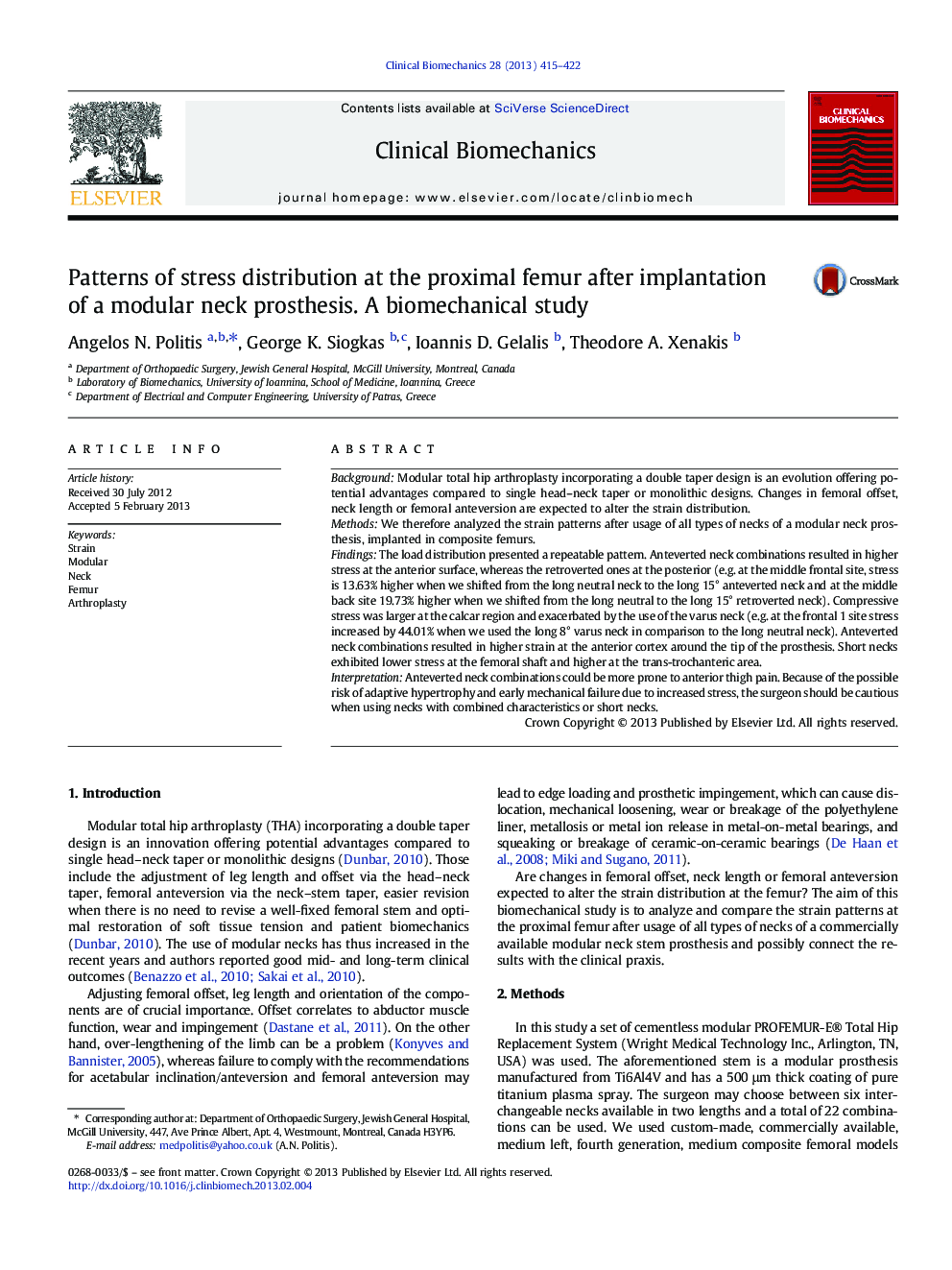| Article ID | Journal | Published Year | Pages | File Type |
|---|---|---|---|---|
| 6204944 | Clinical Biomechanics | 2013 | 8 Pages |
BackgroundModular total hip arthroplasty incorporating a double taper design is an evolution offering potential advantages compared to single head-neck taper or monolithic designs. Changes in femoral offset, neck length or femoral anteversion are expected to alter the strain distribution.MethodsWe therefore analyzed the strain patterns after usage of all types of necks of a modular neck prosthesis, implanted in composite femurs.FindingsThe load distribution presented a repeatable pattern. Anteverted neck combinations resulted in higher stress at the anterior surface, whereas the retroverted ones at the posterior (e.g. at the middle frontal site, stress is 13.63% higher when we shifted from the long neutral neck to the long 15° anteverted neck and at the middle back site 19.73% higher when we shifted from the long neutral to the long 15° retroverted neck). Compressive stress was larger at the calcar region and exacerbated by the use of the varus neck (e.g. at the frontal 1 site stress increased by 44.01% when we used the long 8° varus neck in comparison to the long neutral neck). Anteverted neck combinations resulted in higher strain at the anterior cortex around the tip of the prosthesis. Short necks exhibited lower stress at the femoral shaft and higher at the trans-trochanteric area.InterpretationAnteverted neck combinations could be more prone to anterior thigh pain. Because of the possible risk of adaptive hypertrophy and early mechanical failure due to increased stress, the surgeon should be cautious when using necks with combined characteristics or short necks.
